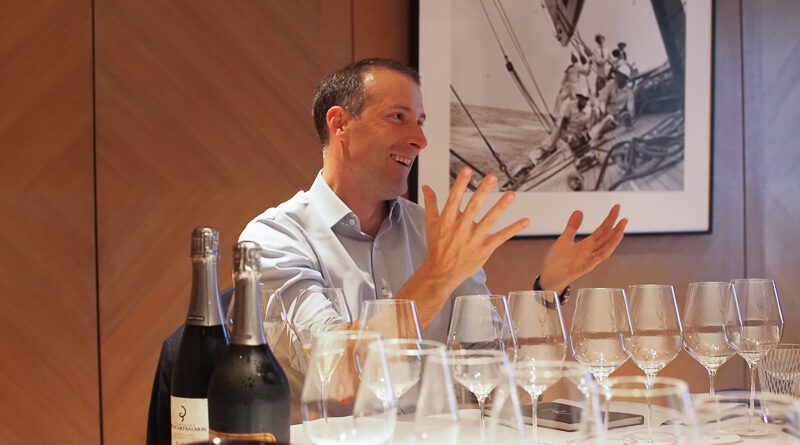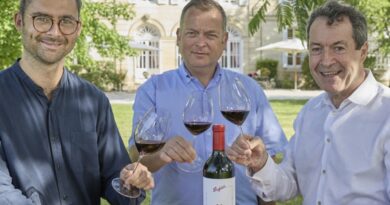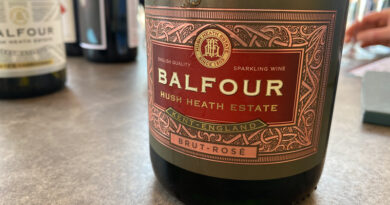Champagne Billecart-Salmon Le Clos Saint-Hilaire: tasting all 7 releases to date
This was my first time tasting one of Champagne Billecart-Salmon’s prestige cuvées, Clos Saint-Hilaire. It comes from a single-hectare plot of vines in Mareuil-sur-Aÿ facing south/southeast, behind the Billecart-Salmon press house. The name comes from the nearby Église Saint-Hilaire. Mareuil is classed as a premier cru, but then these classifications cover an entire village, and each village will have a range of different terroirs all included in the premier cru designation. So, in regard to this plot, such a classification is meaningless.
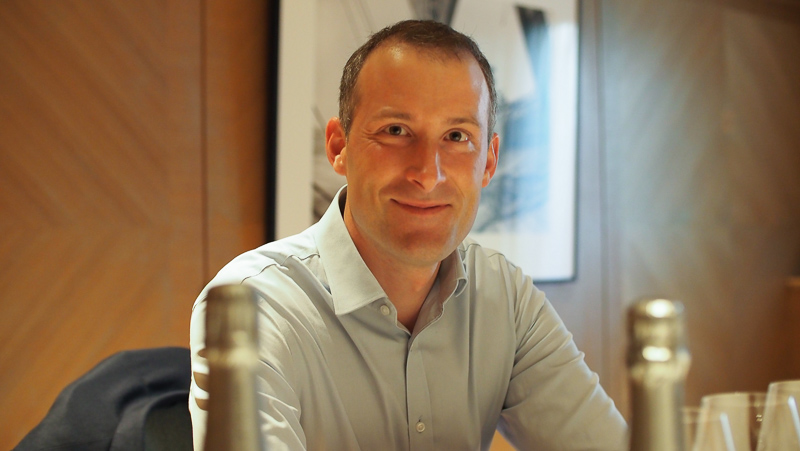
Billecart CEO Mathieu Roland-Billecart (above) presented this remarkable tasting of all the wines so far made, declared and disgorged from this plot, including the as-yet unreleased 2006.
There are a number of more recent vintages of this wine sleeping in the cellars, although the final decision as to whether a Clos St Hilaire will be made in any particular vintage is made after disgorgement. Notably the 2004 Clos Saint-Hilaire was made, but at disgorgement it was tasted and not deemed to be of suitable quality, so the bottles were opened and poured into a tank to become an interesting reserve wine, albeit with some bubbles.
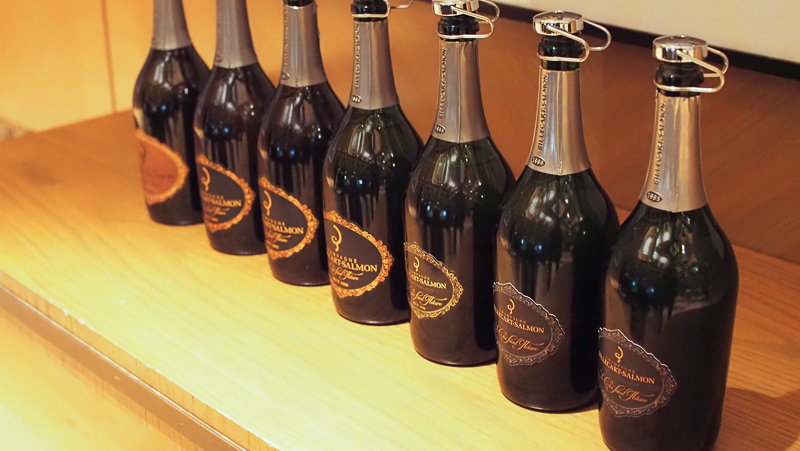
The history of this now celebrated vineyard plot in an interesting. Mathieu’s great grandmother planted this patch of land, situated behind the family home, as an orchanrd and garden back in 1950. But Mathieu’s uncle had other ideas. Convinced of the viticultural potential of this land, with its south-facing exposition and free-draining calcareous soils (it has deep top soils over chalk), he planted it with Pinot Noir vines in 1964.
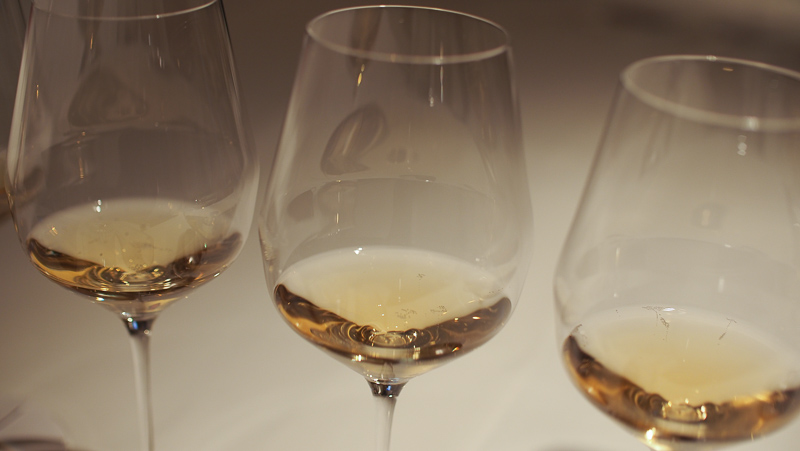
This single hectare parcel of Pinot Noir produces between 3500 and 5000 bottles each year it is declared. Until 1994 the clos was used to make red wine. In 1995 the first Clos Saint-Hilaire was made. ‘It is the antithesis of Champagne,’ says Mathieu. ‘There is no blending of grapes or vineyards or years.’ He adds, ‘we are firm believers in blending. Champagne is about blending.’
From the outset the vineyard has been trained in a way that is not normal for the region, in a permanent cordon. This results in greater concentration in the grapes. ‘You get the behaviour of an old vine when the vine is younger,’ says Mathieu.
Billecart-Salmon’s trials with biodynamics and permaculture were begun here. ‘Much of the progress we have made in viticulture has been started in the Clos,’ he says. ‘We tried straw blankets a while back, and we were excited, but practicalities stopped this.’ He describes the current viticulture as organic plus. There is ploughing by horses, sheep graze the grass, and there are bees.
Mathieu says he sees great hope for permaculture, but a lot depends on the size of the parcel. In Champagne, the average size is 0.13 hectares, so this can be a problem. ‘We don’t believe in the one size fits all approach,’ he says. ‘It is parcel by parcel: some vineyards are more capable of dealing with organics than others.’ They no longer use herbicides, and whether or not they plough depends on the plot. The vineyards are organic or nearly organic. ‘It really comes down to the treatment of mildew,’ he says. ‘Whether we use copper or a synthetic product. Remember the carbon footprint is worse if you go in twice as many times.’ In 2021, a difficult vintage, the average yield in organic plots they control was 3 tons/ha, and in the nearly organic ones it was 6 tons/ha.
Overall, Billecart Salmon is 52% Grand Cru, 16% Premier Cru. House style is not to trigger malolactic fermentation in any of their wines, and they tend to have longer lees ageing. A lot of attention is paid to the liqueur d’exposition. ‘You can’t cover up a bad wine, but you can really make a difference,’ he says. ‘We take as long a time getting that last centilitre right as we do with the first 74.’
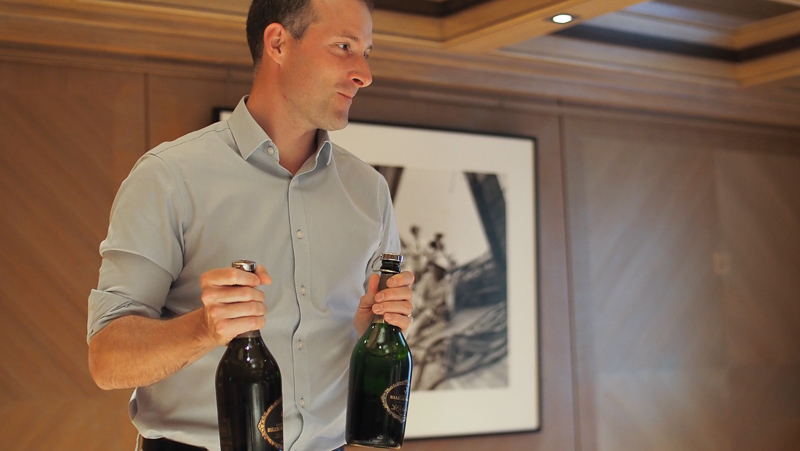
They have a new pressing room. Typically they get 4-6000 kilos from the Clos, so there is just one press load. Pressing is in a pneumatic press, and they have two 4 ton presses and 3 8 ton presses. The juice is cold settled and goes to small French oak barrels (usually 10-12 of them) from Francois Frères, Seguin Moreau and Taransaud.
The barrels are kept cool and there’s a slow alcoholic fermentation of 2-3 weeks. Malolactic is blocked. It stays in barrel until April or May then is bottled in June. After this it spends 15 years on lees with either a cork or a crown cap, depending on the year. Dosage is decided blind, and the highest is 4 g/l; some have none. A good clos bottling is 5000 which is about half normal Champagne yields.
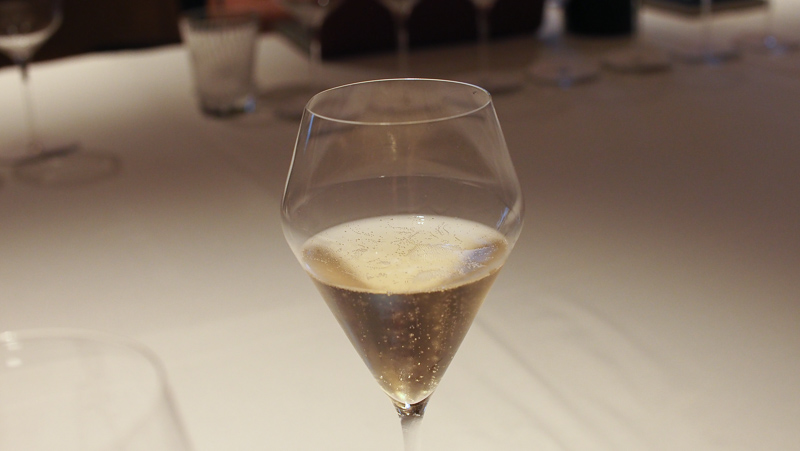
‘There is a point of maturity on lees, and a point of maturity on liqueur, and while these things are complementary they are not substitutable,’ says Matthieu. He says there is no substitute for time on lees, and you know when a wine has reached its point of maturity on lees.
His final comment is that this wine causes him problems with his customers. ‘I love the Clos but it is the bane of my life when it comes to allocation,’ says Mathieu.
We began the tasting with a couple of sighters.
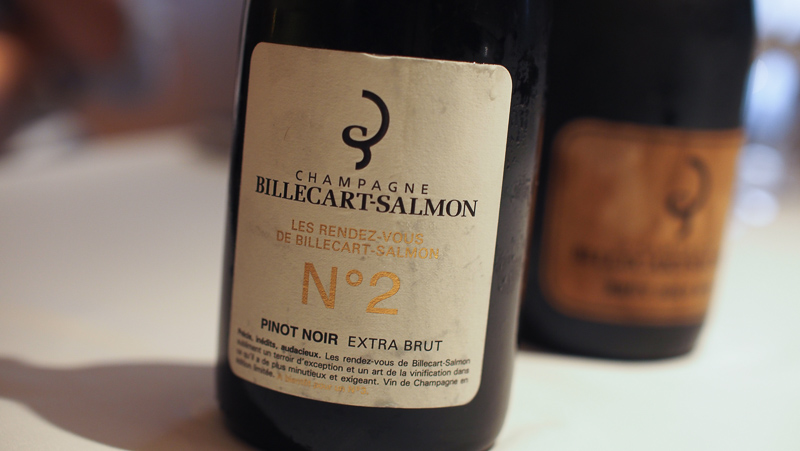
Champagne Billecart Salmon Les Rendez Vous de Billecart Salmon No 2 Pinot Noir Extra Brut NV
These are small experimental bottlings – last year number 1 was 100% Meunier, and it was an unexpected success. This is 2014 from Ambonnay and Verzenay, plus a little bit else (6%) with 22% reserve wines (2012), 65 months on lees, dosage 2 g/litre. 100% stainless steel vinification (for experimental wines the idea was to eliminate other variables). This is compact and focused with bright cherry and lemony fruit, showing good concentration and a taut, mineral line with keen acidity. Shows amazing finesse and balance with lovely intensity. It’s really at the mineral end of Pinot Noir. So fine. 94/100
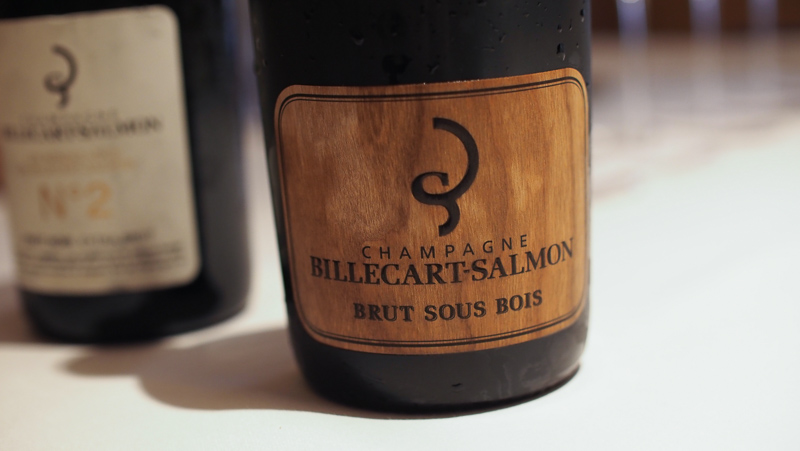
Champagne Billecart Salmon Brut Sous Bois NV
This is the little brother of the Clos St Hilaire: along with that wine this is 100% barrel-fermented and these are the only ones in the range that are. One-third each of the three main varieties. This is base 2013, with a third of reserve wine. Malolactic is blocked. Dosage 6-7 g/litre. Taut and vivid with bright cherry fruit, some lively citrus and a touch of spice. Pristine with lovely intensity and a nice savouriness, finishing bright and complex, with lovely tension on the finish. A gastronomic Champagne. 94/100
Champagne Billecart Salmon Le Clos Saint-Hilaire
Champagne Billecart Salmon Le Clos Saint-Hilaire 2006
Not released yet. Harvested late September with natural alcohol of 11%. Disgorged November 2020 with a dosage of 2 g/litre. 6500 bottles, which is the largest production from this vineyard. This is concentrated and rich with nuts, toast, cherries and pear, as well as some apple. It’s really concentrated with a distinctive savoury quality. There’s a fine saline twist here and a bit of structure. Really fine and distinctive with some compact toast and nut quality, finishing long and finely spiced. Has some cherry on the finish. 96/100
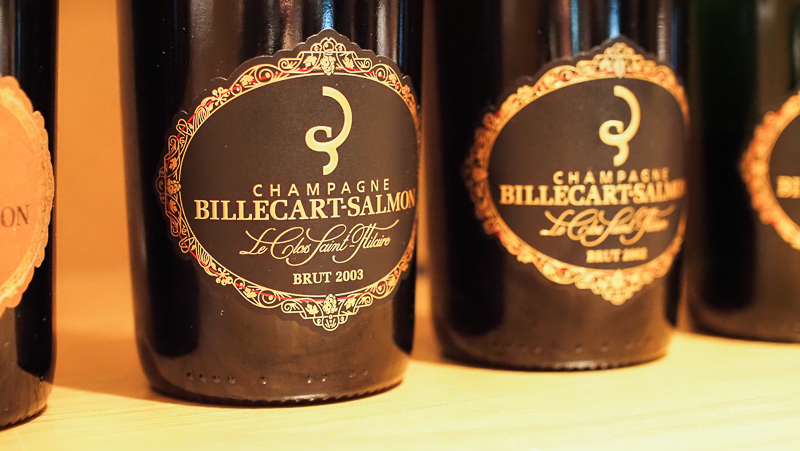
Champagne Billecart Salmon Le Clos Saint-Hilaire 2003
Smallest production at 1000 bottles. At the time, Matthieu thought he’d be downgrading 2003, the year of the heatwave, but the heat doesn’t show in the wine. Alcohol level at picking 11.1, dosage 3.5 g/l, disgorged July 2019. Concentrated, rich and intense with lovely toasty richness and some nutty characters, as well as dried herbs and a touch of honey. Lovely depth to the pear and peach fruit on the palate with some citrus brightness coupled with broad, rich flavours. Very expressive with some lovely depth and roundness, but with a spicy framing. 95/100
Champagne Billecart Salmon Le Clos Saint-Hilaire 2002
A great year. 11% natural alcohol, late-ish harvest. Dosage is 1 g/litre. 3774 bottles. ‘We saw a step up in the Clos standing in the market with 2002,’ says Matthieu. Nuts, honey, spice and cherries, as well as some crystalline citrus fruit on the nose. Powerful and structured with a real vinosity, showing a balance between citrus and apple fruit with the savoury nut and toast characters. Lovely intensity and depth with power and presence, and good acidity. Very fine showing great intensity, a touch of marzipan, and a fine toasty, slightly sweet flourish on the finish, which just goes on and on. 98/100
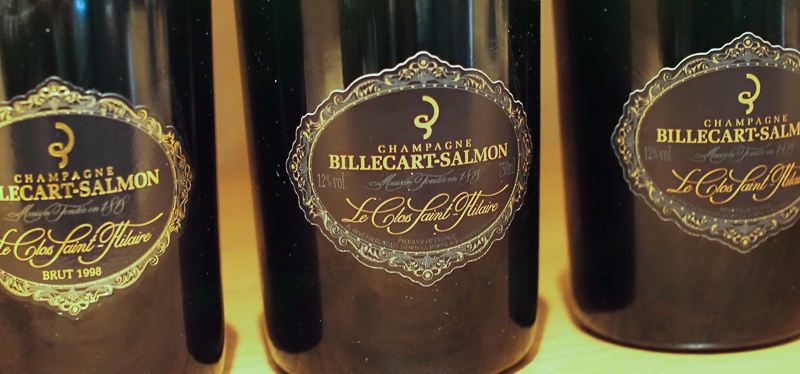
Champagne Billecart Salmon Le Clos Saint-Hilaire 1999
6750 bottles made. No dosage. Disgorged in June 2014. This is broad and complex with apple, honey, nuts and some spice on the nose. The palate is dry and savoury with honey, straw and nuts as well as some dried citrus fruit, a touch of peach, cherry, and some savoury intensity. This is so layered with a spicy finish, tapering beautifully. Very expressive. 96/100
Champagne Billecart Salmon Le Clos Saint-Hilaire 1998
6750 bottles. No dosage, disgorged July 2009. Complex nose with some savoury maturity, showing a touch of malt, honey and spice as well as crystalline citrus fruit and a touch of burnt sugar. The palate is savoury and intense with toast and nuts, some peach, and lovely citrus fruit with keen acidity supporting the rich, toasty, honeyed core. Very fine and expressive, showing delicious maturity. 96/100
Champagne Billecart Salmon Le Clos Saint-Hilaire 1996
6750 bottles. This wasn’t bottled in 1997 – the base wine was left on the lees a year longer. Disgored in April 2007. Dosage 4 g/l. This is intense with keen acidity still apparent, under the rich, harmonious toast, toffee and nut flavours. Very compact and crystalline with lovely peach, apricot, honey, spice and toasted almond flavours. Amazing complexity here with reall finesse allied to richness. 97/100
Champagne Billecart Salmon Le Clos Saint-Hilaire 1995
The debut vintage. 3360 bottles, disgorged November 2004. No dosage. Complex and intense with nice acidity – brisk acidity, even – and honey, toast, spice, brioche and some savoury cedary notes. There’s some sour cherry and plum here, and a fine toastiness. Great precision and a lovely maturity to this wine. There’s a lot of complexity here, as well as maturity. 96/100
Find these wines with wine-searcher.com

